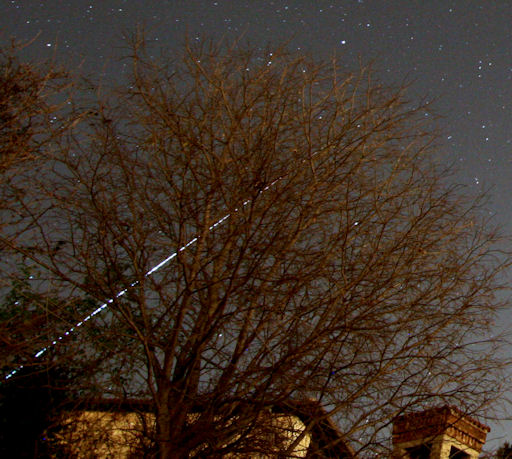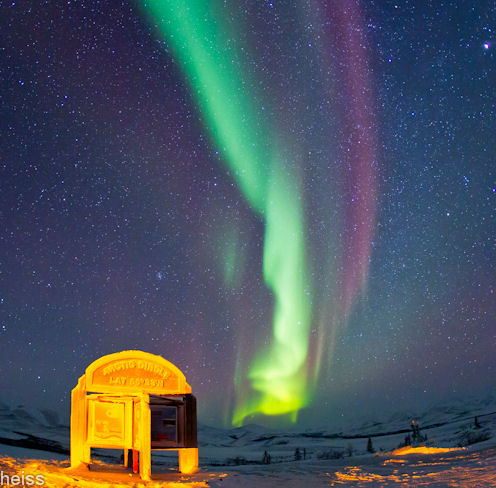They came from outer space--and you can have one! Genuine meteorites are now on sale in the Space Weather Store. | | |
ASTEROID FLYBY: Potentially hazardous asteroid 4179 Toutatis is sailing past Earth today. There's no danger of a collision, say astronomers, but the asteroid is close enough for unusually clear radar images of the tumbling space rock. [full story]
GEMINID METEOR SHOWER--THIS WEEK! Earth is entering a stream of debris from rock comet 3200 Phaethon, source of the annual Geminid meteor shower. Forecasters expect as many as 120 Geminids per hour to appear when the shower peaks on Dec. 13th and 14th. The best time to look is during the dark hours before dawn this Thursday and Friday. [sky map] [meteor radar] [video]
"I photographed my first spectacular Geminid this morning, Dec. 12th," reports Antonio Finazzi of Chiuduno (BG), Italy. The fireball was visible even through the trees:

According to the International Meteor Organization, Geminid rates are now at 20 per hour and climbing. Monitor the Spaceweather.com's realtime photo gallery for more images as the shower intensifies.
Extra meteors? NASA says that another meteor shower, appearing for the first time this year, could add to the count of Geminids on Dec. 13th. Veteran sky watcher Doug Zubenel of Kansas sends this report of a possible sighting: "I believe this shower is real, because at ~ 19:30 hrs, CST on Dec. 10th, I saw a very slow-moving meteor nearly as bright as Jupiter enter the frame of my windshield as I was driving east, and it was in Taurus moving toward the Orion/Gemini border. It's path led back through the radiant in Pisces. While this obviously does not prove it was from Wirtanen, it certainly seems likely."
ARCTIC LIGHTS: There was no geomagnetic storm last night, but around the Arctic Circle a geomagnetic storm is not required to produce auroras. Last night, photographer Mike Theiss was traveling along the Dempster Highway just north of Eagle Plains, Canada, when the sky erupted in color. The sign in the foreground marks the latitude of the Arctic Circle:

"It was insane," he says. "Lights danced all over the sky for 3 hours! I've never seen anything like it."
Theiss was located beneath Earth's auroral oval, a doughnut of light circling the North Pole where auroras sputter on and off even when geomagnetic storms are at low ebb. Displays like this could occur on any night of northern winter. Such auroras are all we can expect for the next few days as NOAA forecasters estimate a mere 5% chance of geomagnetic storms. Aurora alerts: text, voice.
Realtime Aurora Photo Gallery
Realtime Space Weather Photo Gallery
Realtime Noctilucent Cloud Photo Gallery
[previous years: 2003, 2004, 2005, 2006, 2007, 2008, 2009, 2011]

